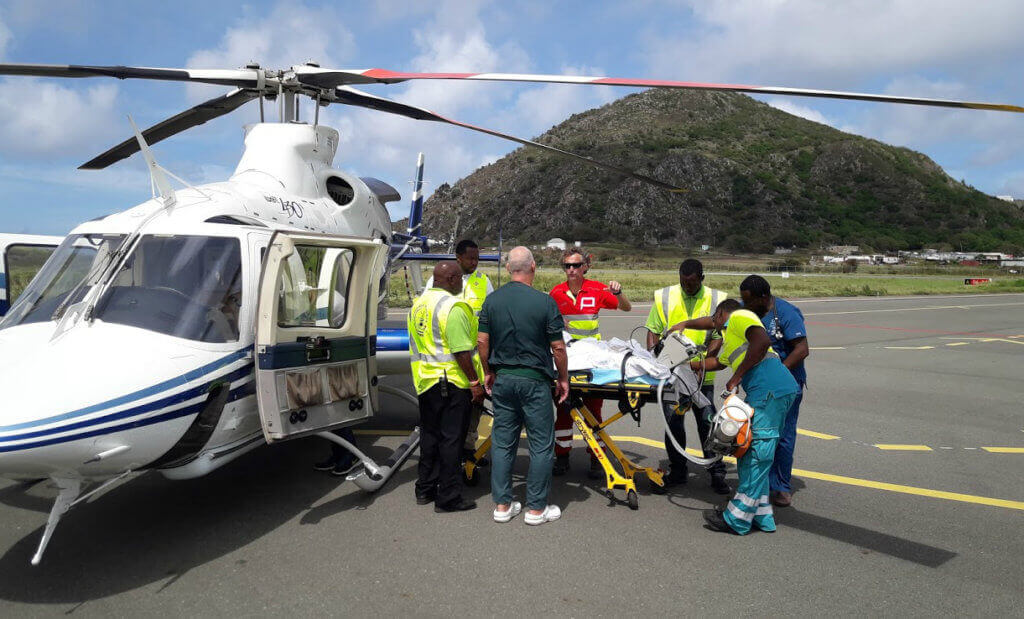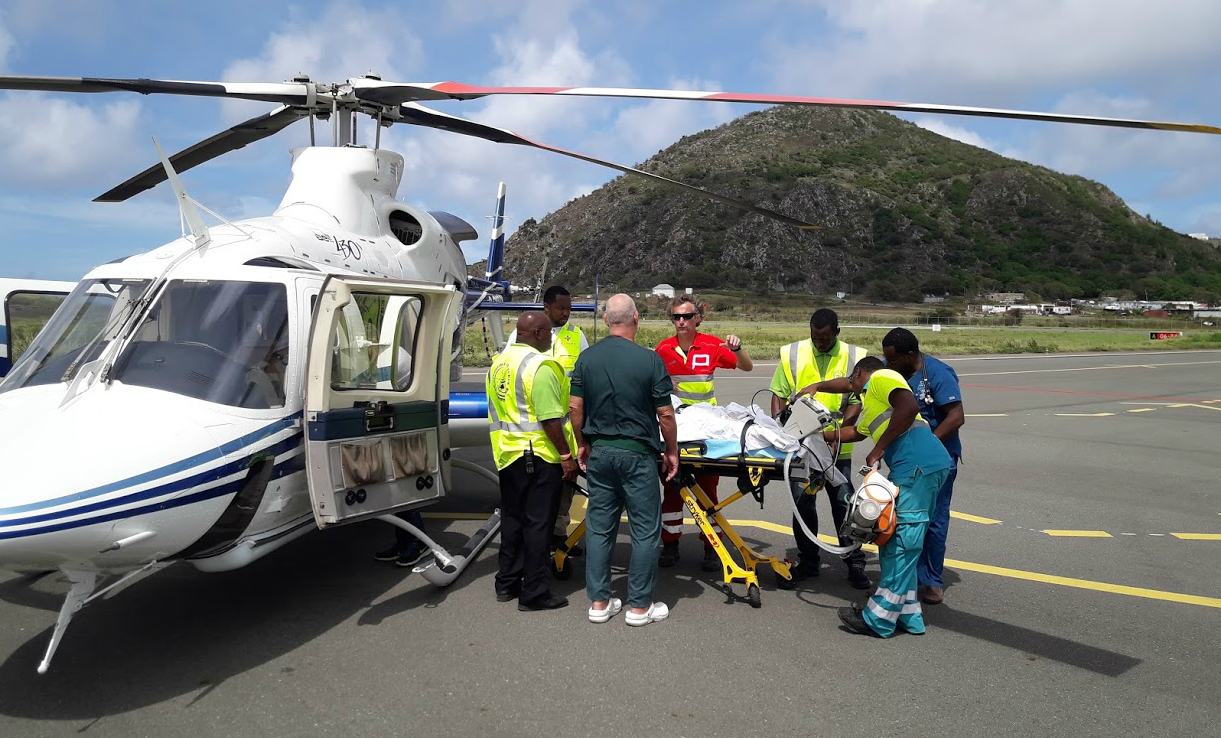A Canadian helicopter operator has shared details of its work in the Dutch Caribbean following the devastating impact of Hurricane Irma in the region.

The hurricane brought widespread destruction to the Leeward Islands, becoming the first Category 5 storm to ever hit the island chain on the western Atlantic Ocean. On Sept. 6 and 7, the eye of the storm passed over the small island of Saint Martin, which is divided into two territories: the French Saint-Martin, and the Dutch Sint Maarten. Winds reaching 185 m.p.h. battered the island, destroying countless homes and crippling infrastructure.
Less than 50 miles to the south, National Helicopters rode out the storm with its Bell 430 and MBB Bo.105 as sheltered as possible at its base on St. Eustatius. The Canadian-based operator, headquartered in Toronto, Ontario, has been providing a medevac service in the Dutch Caribbean for the Dutch Ministry of Health since 2010, with a contract to serve the islands of St. Eustatius and Saba. Typically, National Helicopters ferries patients from these islands to the more comprehensive medical care available on the bigger islands of St. Maarten to the north, or Guadeloupe to the south.
While the company knew Irma was approaching, and had plans to move the aircraft to the relative safety of Guadeloupe before it struck, a steady flow of patients — and a significant deterioration in the weather — prevented that plan from being implemented.
“We were doing regular medevac flights right up to the hurricane coming through, so we couldn’t just up and leave,” Dan Munro, National Helicopters’ president, told Vertical. “By the time we decided to leave, it would have been too late, so we had to batten down the hatches and lock everything up and hope for the best.”
The National Helicopters crew, consisting of pilots Jim Young and Ed Clapp, and maintenance engineer Guy Beazley, were confined to the company’s crew house as the storm passed through in the early hours of the morning.
“They were ready to move out of our crew house into something more substantial should the hurricane take the roof off our place there — which was a big concern,” said Munro. “Usually when these hurricanes pass over these locations, the first thing to go is the roof off the buildings.”
By 8:30 a.m., the three were able to head down to the St. Eustatius airport to survey the damage. Despite winds of 85 to 90 m.p.h. being recorded there, the hangar was in one piece — minus an eavestrough. “We got unbelievably lucky,” said Munro.
Sint Maarten wasn’t as fortunate. “The place just looks like it was hit by an atomic bomb,” said Munro. “It was devastated.”
Of primary concern was the extensive damage wrought on the St. Maarten Medical Center and the St. Maarten airport. The hospital had lost a portion of its roof and had sustained significant water damage, which caused issues with some of the life-saving and life-sustaining equipment inside. The airport’s new terminal lost its roof, and Munro said the fences surrounding it were destroyed and thousands of tons of sand had been washed onto the runway.
The priority was to evacuate the most vulnerable patients from the hospital, who were primarily those on dialysis or due to give birth imminently. Landing on a soccer field behind the hospital, National Helicopters used both aircraft to ferry about 60 patients back to St. Eustatius in the days following the hurricane, from where they were flown in jets to facilities in Bonaire or Curacao.
In addition to that, it flew technicians up to the hospital to help fix the damaged medical equipment, and also flew equipment out of the hospital to get it repaired.
Complicating matters was the lack of aviation infrastructure, with no flight planning, air traffic control, fuel, or communications on Sint Maarten.
“Initially, the [Dutch] Ministry of Health were calling from Bonaire here to Canada, and then we would, in turn, relay messages via satellite telephone and eventually internet back to our crews in-station, and that’s how we were dispatching them, believe it or not,” said Munro. “I was up all night the first day after the hurricane, just trying to retain communication with our people.”
Because of the lack of fuel on Sint Maarten, the helicopters had to fly down to St. Kitts, 15 miles south of St. Eustatius, to fill up their tanks.
The shuttle runs to the hospital lasted for about a week following the hurricane, said Munro, who praised his team’s response to the unprecedented situation they faced. “They are to be commended for their professionalism and dedication under very trying circumstances, with virtually no communications for the better part of four/five days,” he said.
As the island of St. Martin navigated the immediate dangers in the first days and weeks following the storm’s passage, its people began the long rebuilding process — one faced by the many island nations that lay in Irma’s path, and in which helicopters are likely to play a crucial role.









